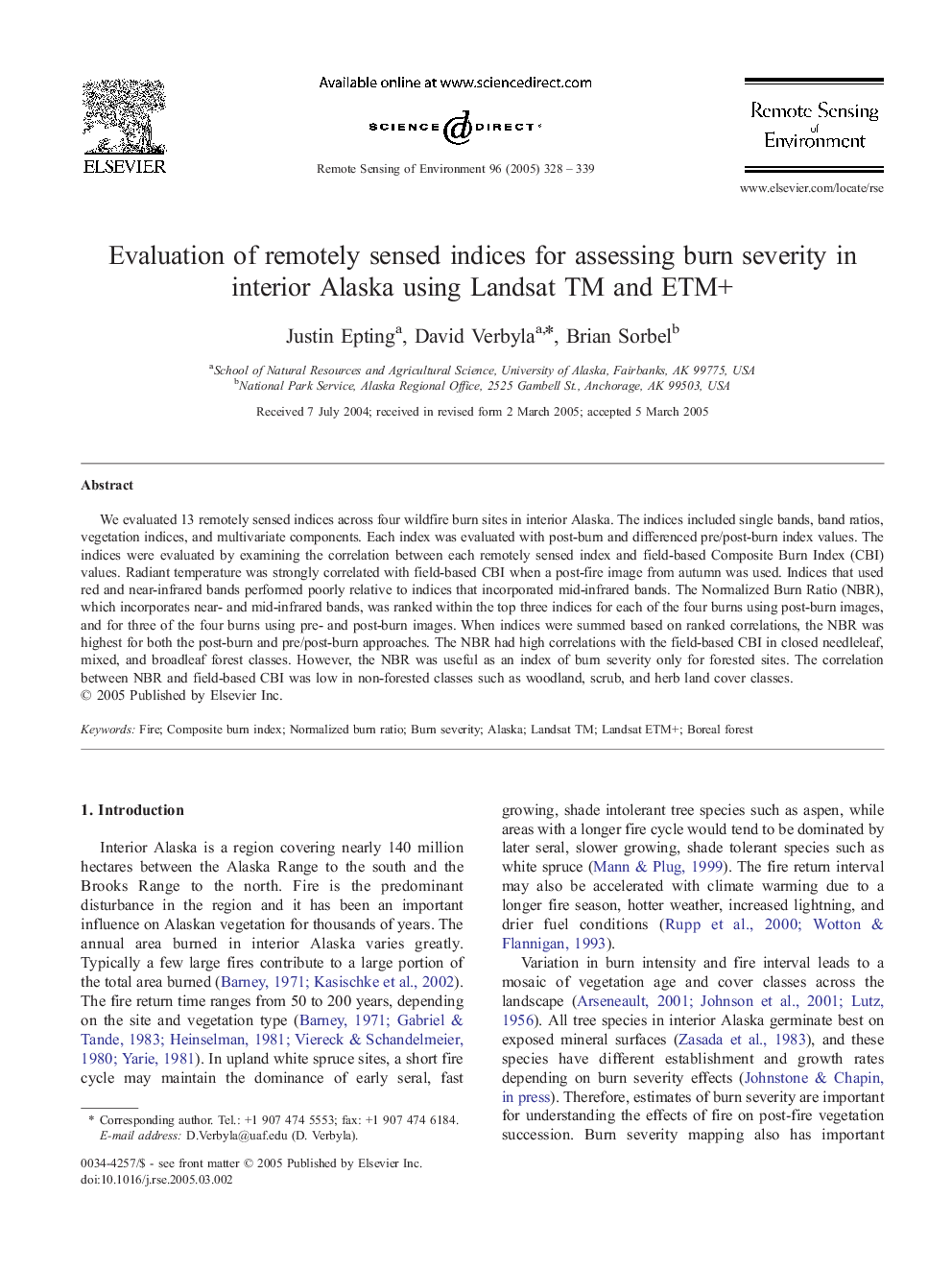| Article ID | Journal | Published Year | Pages | File Type |
|---|---|---|---|---|
| 10114194 | Remote Sensing of Environment | 2005 | 12 Pages |
Abstract
We evaluated 13 remotely sensed indices across four wildfire burn sites in interior Alaska. The indices included single bands, band ratios, vegetation indices, and multivariate components. Each index was evaluated with post-burn and differenced pre/post-burn index values. The indices were evaluated by examining the correlation between each remotely sensed index and field-based Composite Burn Index (CBI) values. Radiant temperature was strongly correlated with field-based CBI when a post-fire image from autumn was used. Indices that used red and near-infrared bands performed poorly relative to indices that incorporated mid-infrared bands. The Normalized Burn Ratio (NBR), which incorporates near- and mid-infrared bands, was ranked within the top three indices for each of the four burns using post-burn images, and for three of the four burns using pre- and post-burn images. When indices were summed based on ranked correlations, the NBR was highest for both the post-burn and pre/post-burn approaches. The NBR had high correlations with the field-based CBI in closed needleleaf, mixed, and broadleaf forest classes. However, the NBR was useful as an index of burn severity only for forested sites. The correlation between NBR and field-based CBI was low in non-forested classes such as woodland, scrub, and herb land cover classes.
Keywords
Related Topics
Physical Sciences and Engineering
Earth and Planetary Sciences
Computers in Earth Sciences
Authors
Justin Epting, David Verbyla, Brian Sorbel,
